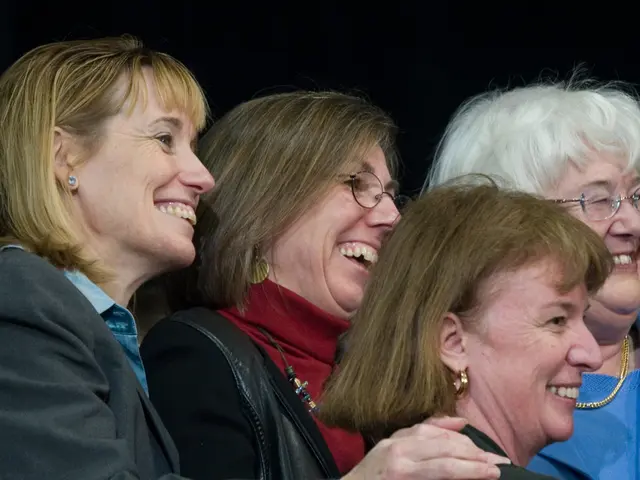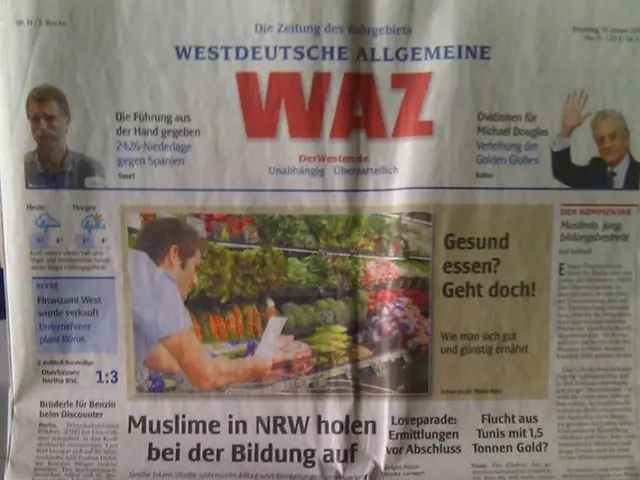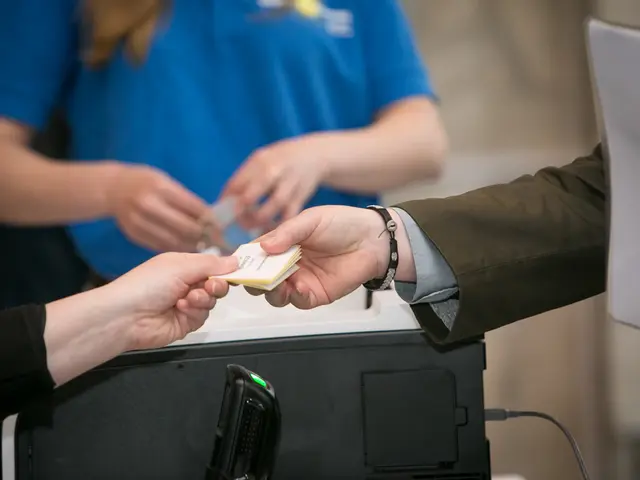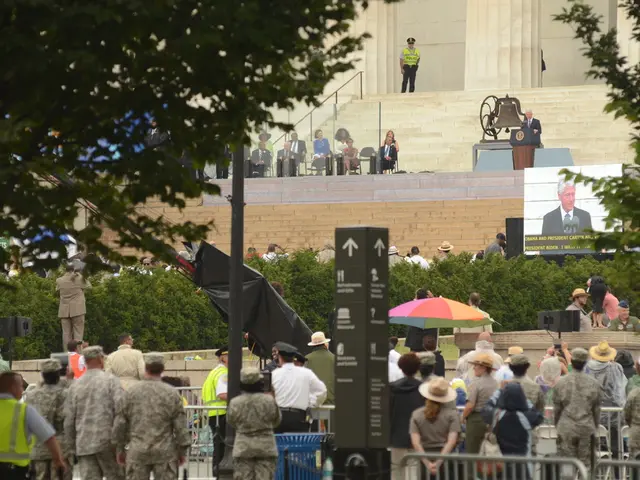Trump devises a plan for humanitarian aid, while Witkoff and Huckabee travel to Gaza to inspect the situation.
Steve Witkoff, President Donald Trump's special envoy to the Middle East, and U.S. Ambassador to Israel Mike Huckabee will visit Gaza on Friday to inspect the U.S. and Israel-backed aid distribution system. This will be Witkoff's second trip to Gaza this year.
The purpose of the visit is to give President Trump a clear understanding of the humanitarian situation in Gaza and help craft a plan to deliver food and medical aid to the people of Gaza. Following their visit, Witkoff and Huckabee will brief President Trump to secure a plan for food and aid distribution into the region.
The U.S. has pledged $30 million towards the Gaza Humanitarian Foundation's (GHF) efforts in Gaza, and the money is expected to be distributed to the group within the coming days. The GHF took over most of the aid distribution system in Gaza on May 27, with Israel's approval, after an 11-week Israeli blockade on all supplies from entering the strip.
However, the aid distribution system faces severe challenges. Human rights organizations have criticized the restrictive and unsafe distribution methods, with many Palestinians seeking aid being killed or injured while trying to reach the limited number of distribution points, which are set up and controlled by the Israeli military in militarized zones.
The current plan for food and aid distribution in Gaza involves bringing in 2,000 metric tons of food aid daily, split evenly between northern and southern Gaza, coordinated by the UN World Food Programme (WFP) in agreement with Israeli authorities. The WFP has delivered over 18,000 metric tons of food aid since May 21, focusing on wheat flour for bread, ready-to-eat rations, emergency nutrition supplies, and yeast for baking.
Complementing WFP’s efforts, the UN Office for the Coordination of Humanitarian Affairs (OCHA) plans to scale up food and nutrition assistance through food-in-kind and vouchers, increasing access to water and sanitation, distributing hygiene and dignity kits, and focusing on acute malnutrition treatment for children under five and pregnant or lactating women.
No specific public details from Witkoff's own proposals for food and aid distribution in Gaza were found. The described plans primarily reflect the United Nations and humanitarian agencies' coordinated efforts, alongside the Israeli authorities' control of border crossings and site access.
Witkoff and Israeli Prime Minister Benjamin Netanyahu recently agreed on several tenets related to a ceasefire framework, including that it was time to consider a ceasefire that would free all Israeli hostages, that Hamas must disarm, and that Israel and the U.S. should work together to increase the flow of aid into Gaza even as the conflict continues.
In late January, Witkoff became the first high-level U.S. official to enter Gaza in more than a decade when he toured an area of the Gaza Strip that was still occupied by the Israeli military. Huckabee posted photos of the visit on his social media account.
The Trump administration and Israel have backed the GHF, an American non-profit now charged with distributing most aid that is allowed to enter Gaza. As of now, GHF operates only four distribution sites across Gaza.
[1] UN World Food Programme, Gaza Crisis: WFP Provides Food Assistance to Vulnerable Palestinians
[2] UN Office for the Coordination of Humanitarian Affairs, Gaza: Humanitarian Situation Worsens as Access and Movement Restrictions Continue
[3] UN Office for the Coordination of Humanitarian Affairs, Gaza: Humanitarian Response Plan 2021
- The UN World Food Programme (WFP) is providing food assistance to vulnerable Palestinians in Gaza, contributing to the international effort aimed at addressing the humanitarian crisis in Gaza.
- The humanitarian situation in Gaza is worsening as access and movement restrictions continue, according to the UN Office for the Coordination of Humanitarian Affairs (OCHA).
- The UN Office for the Coordination of Humanitarian Affairs (OCHA) has planned to scale up food and nutrition assistance through food-in-kind and vouchers, addressing issues like access to water and sanitation, and focusing on acute malnutrition treatment for children under five and pregnant or lactating women in Gaza.
- In addition to the UN's coordinated efforts, the United Nations and humanitarian agencies are not the only ones actively engaged in Gaza. The Gaza Humanitarian Foundation (GHF), which has taken over most of the aid distribution system in Gaza and operates only four distribution sites across Gaza, is also working to deliver food and medical aid to the people of Gaza, with the support of the U.S. and Israel, as part of the political and policy landscape amid war-and-conflicts, general news, and policy-and-legislation regarding the region.








